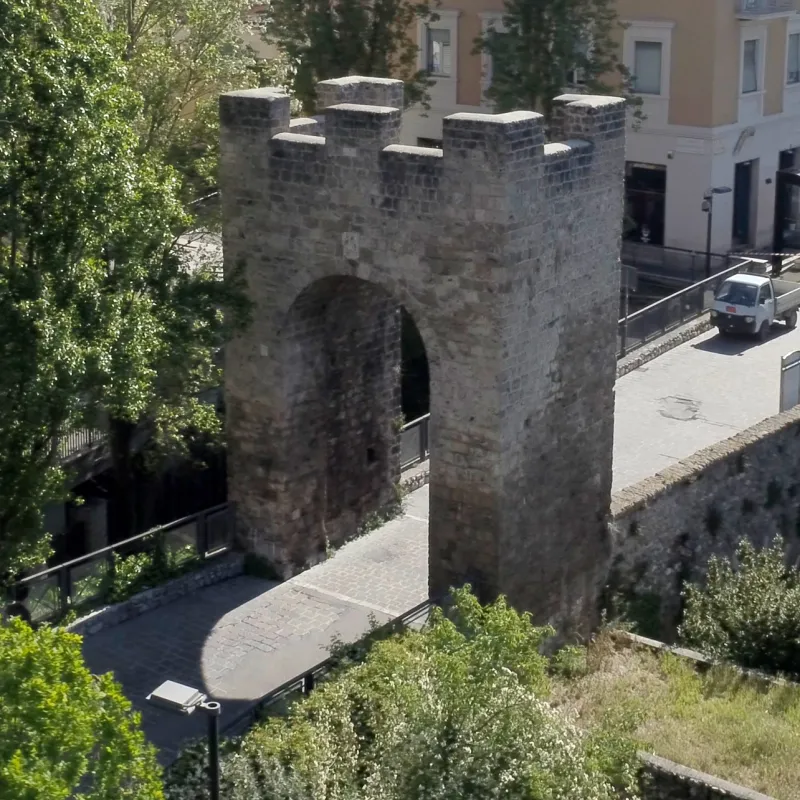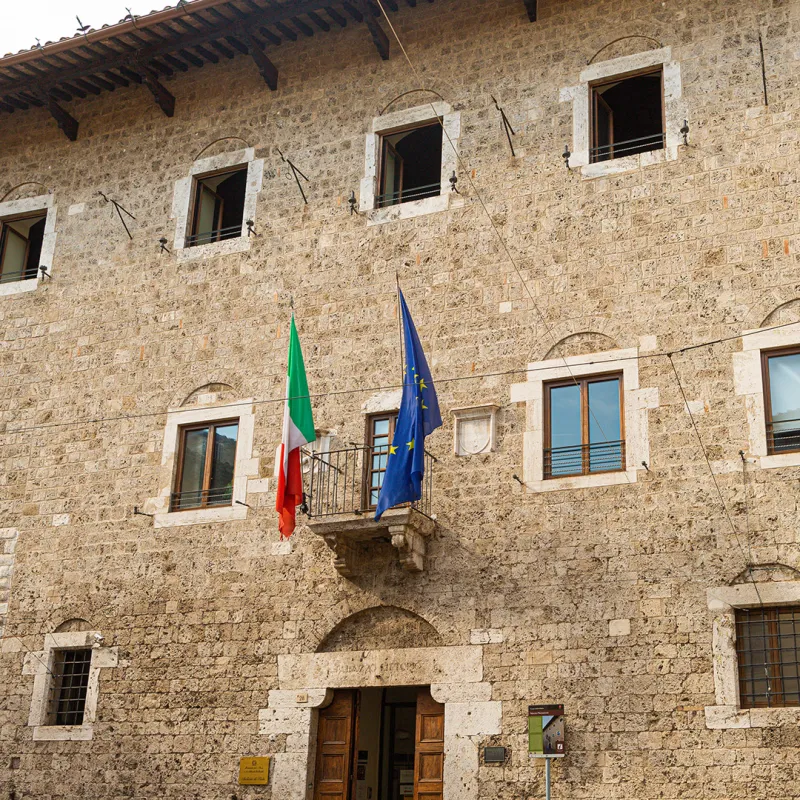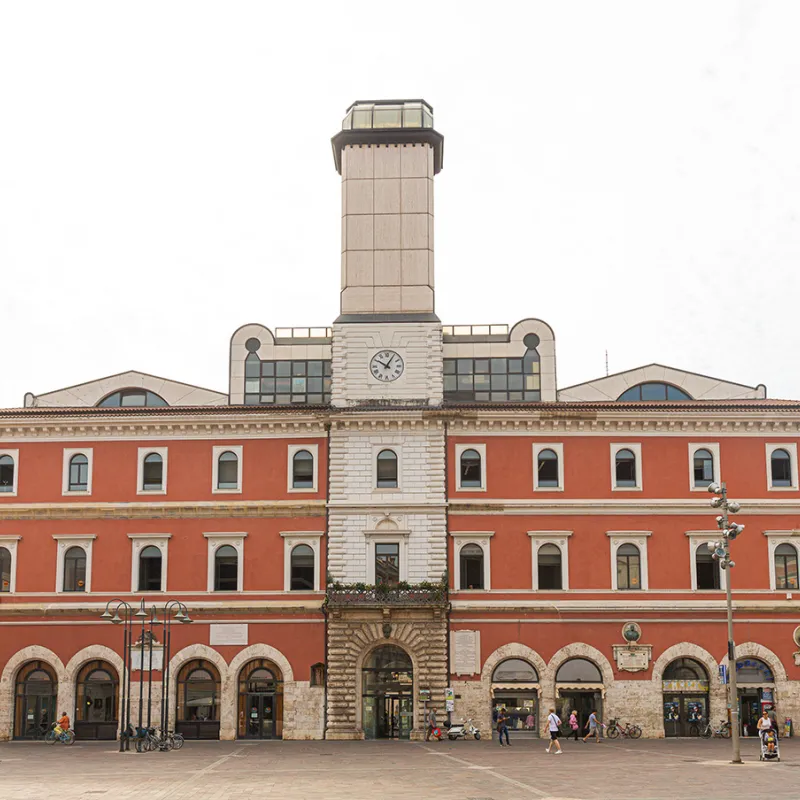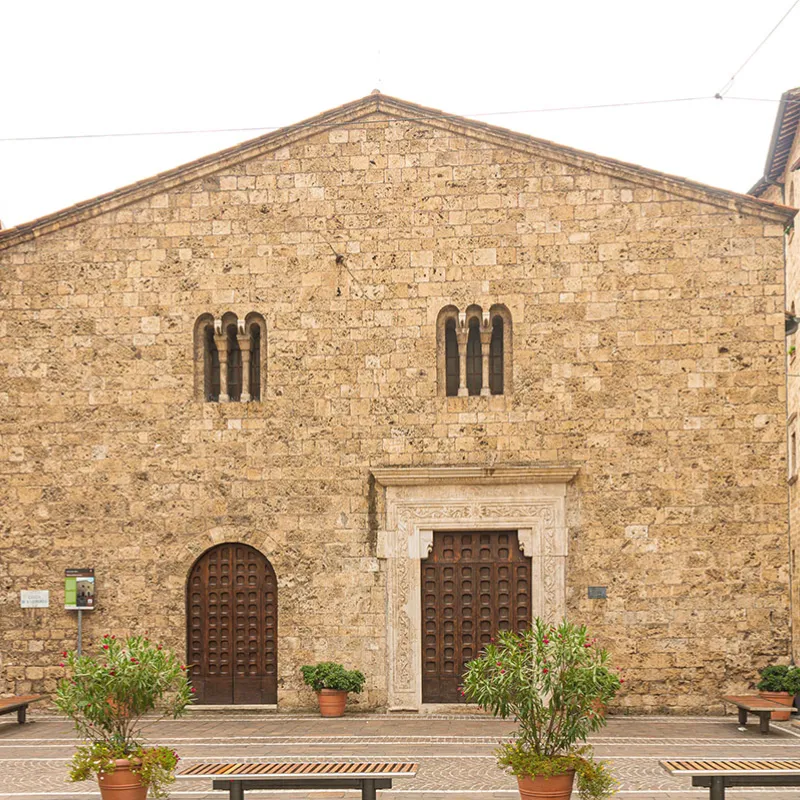Medieval Terni
The town of Terni preserves some interesting medieval monuments now blending into the modern urban fabric.
The town, surrounded by high, square town walls with towers, buttresses and bastions was divided into six districts (Fabri, Castello, Rigoni, Adultrini, Di Sotto and Amingoni).
Today some of the towers of the medieval wall can still be seen, for example in Via Battisti or in Vico Possenti. The town could be assessed by five gates: only two of which are still visible today, the Spoletina and S. Angelo.
In correspondence to the entrance gates there were as many bridges passing over the rivers flowing through the town, the Nera and the Serra.
Among the best preserved medieval buildings are Palazzo Mazzancolli, the former Town Hall (XX Settembre hall), the sanctuary of St.Francis, the crypt of the Duomo and St.Saviour’s, St.Alò’s, St Peter’s, St.Lawrence’s and St.Christopher’s.
THE STAGES OF THE ITINERARY

Porta Sant' Angelo, the western gate of the medieval city, is so called because a church situated a short distance away was dedicated to Sant'Angelo before it was demolished in 1600.

Through Porta Spoletina, the Flaminia consular road leading out of Terni, in a southwest northeast direction, headed towards the Somma mountain and therefore, Spoleto.

Palazzo Mazzancolli is one of the most important examples of medieval architecture in Terni.

For centuries it was the building of power. Today it hosts Terni’s Municipal Library, a venue for cultural events as well as for the collection and consultation of books and multimedia support.

The construction of the Church was undertaken in 1265. The original building had a nave with transept, in a Gothic style with ribbed cross vaults and a polygonal apse.

The church of San Salvatore, located in the small square of the same name, is a short distance from Palazzo Spada, the Town Hall of Terni. It is one of the oldest religious buildings in Terni, certainly the most impressive, whose origins date back to the early Middle Ages.

The Church of Sant'Alò, originally dedicated to St Peter, is one of the oldest and most significant religious buildings in Terni.

The present church, extensively remodelled over the centuries, dates back to the 12th century and has a gabled façade, adorned with a beautiful portal surmounted by the remains of a Gothic rose window, while the interior contains numerous frescoes dating back to the 13th and 14th centuries.

The church, one of the oldest parish churches in the city, was built in the Romanesque period and has been enlarged and restored several times over the following centuries and mostly rebuilt after heavy bombing during World War II.

The Church of San Cristoforo stands in an area of the historical centre of Terni that was profoundly transformed by post-war reconstruction.

It belongs to the ad oratorium type, but due to the simplicity of its floor plan, it can be attributed to the early period of the spread of that type.